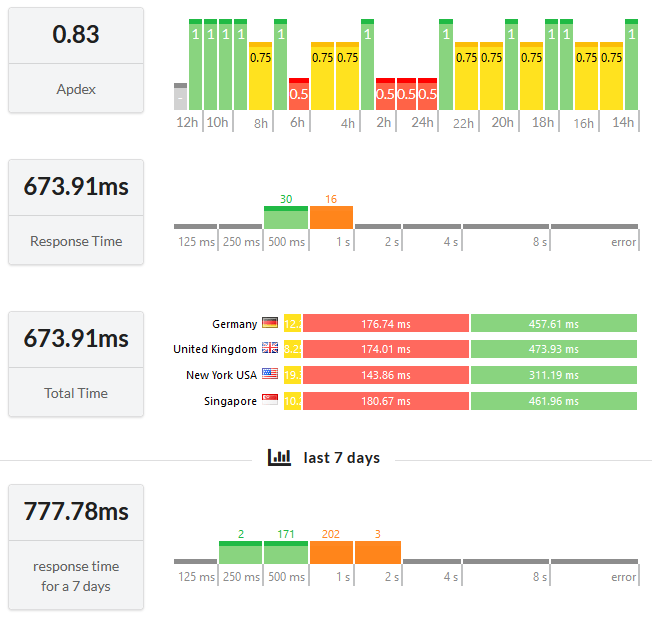Ping (IPv6) from multiple worldwide locations
Check your website availability from 9+ locations around the world. Register for a free Upzilla account to monitor up to 10 websites/servers continuously for free and receive alerts when they go down!

What is IPv6?
IPv6, or Internet Protocol version 6, is the most recent version of the Internet Protocol (IP) that is used to identify and locate devices on a network. It provides a significantly larger address space compared to its predecessor, IPv4, and offers other improvements such as better security and network auto-configuration.
What is Ping?
Ping is a networking utility used to test the reachability of a host on an Internet Protocol (IP) network and to measure the round-trip time for messages sent from the originating host to a destination computer. It is commonly used to diagnose network connectivity issues and measure the performance of a network.
IPv6 Ping: The Next Generation of Network Testing
In today's interconnected world, the speed and reliability of your website are critical factors that can make or break your online success. As internet users demand faster loading times and seamless browsing experiences, website owners need to ensure that their online platforms are performing optimally across the globe. That's where IPv6 ping from multiple worldwide locations comes into play – offering a powerful tool for monitoring and optimizing website performance. In this article, we'll explore the significance of IPv6 ping and how leveraging it from multiple global locations can enhance your website's performance and user experience.
IPv6 ping extends the capabilities of traditional IPv4 ping to support the newer IPv6 protocol. By using IPv6 ping, you can test the connectivity and latency to IPv6-enabled devices and servers, ensuring that your website is accessible to users on IPv6 networks.
Benefits of Ping from Multiple Worldwide Locations
Network Troubleshooting
In addition to performance monitoring, IPv6 ping from multiple worldwide locations can also be a valuable tool for network troubleshooting. By analyzing ping results from different regions, you can pinpoint network issues such as packet loss, high latency, or routing problems and take corrective actions to resolve them quickly, minimizing downtime and ensuring a smooth browsing experience for your users.
Localized Performance Monitoring
Different regions may experience varying levels of latency and network congestion due to factors such as distance from servers, network infrastructure, and internet service providers. By pinging your website from multiple locations, you can monitor its performance in real-time and identify areas where optimization is needed to provide a consistent and responsive user experience.
Load Balancing Optimization
For websites with a global audience, load balancing across multiple servers in different regions is essential for distributing traffic efficiently and minimizing latency. By conducting IPv6 ping tests from various locations, you can evaluate the effectiveness of your load balancing setup and make adjustments as needed to optimize performance and ensure high availability.
Global Reachability Testing
By conducting ping tests from various points across the globe, spanning multiple continents and diverse geographical regions, you gain a comprehensive understanding of your website's performance metrics. This extensive testing regimen empowers you to pinpoint any potential connectivity or latency issues that might be hindering user experience in specific geographic areas.
We take great pleasure in assisting our valued customers
We take genuine pleasure in witnessing the expansion of our community. Upzilla plays a pivotal role in helping customers avert outages, providing timely alerts, and even foreseeing potential performance challenges. We've witnessed numerous scenarios where our clients faced challenges spanning websites, servers, domains, mail servers, SSL certificates, and a myriad of other cases. Our ability to identify thousands of hours of downtime has enabled us to guide customers in mitigating financial losses, courtesy of Upzilla's holistic monitoring solutions
LIVE Hosted Status Pages
Our hosted status pages are always up and running, so you can keep your users informed about the status of your website. Even free accounts can create identical status pages

